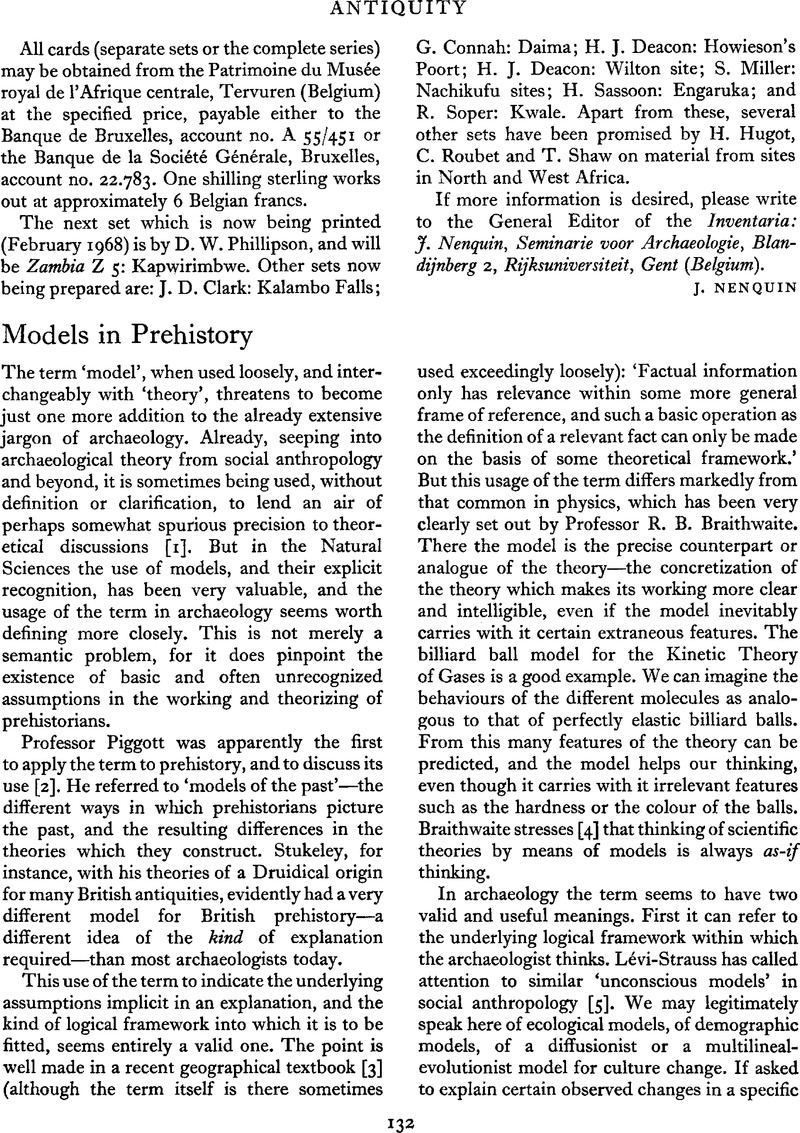
[1] Chang, R. C., Rethinking Archaeology (1967), 90.Google Scholar ‘A type ... is both a model consisting of elements and itself an element. . . .’
[2] Piggott, S., Approach to Archaeology (1959)Google Scholar, ch. 1.
[3] Chorley, R. J. and Haggett, P. (eds.), Models in Geography (1967)Google Scholar; cf. also, Comments of Dr Daniel’s Seminar on Lowther, G. R., ‘Epistemology and Archaeological Theory’, Current Anthropology 3, 1962, 504 CrossRefGoogle Scholar.
[4] Braithwaite, R. B., Scientific Explanation (1960), 93Google Scholar.
[5] Lévi-Strauss, C., Anthropologie Structurale (1958), 308Google Scholar.
[6] Leach, E. R., Rethinking Anthropology (1961), 2Google Scholar.
[7] C. Renfrew, J. R. Cann and J. E. Dixon, ‘Patterns of Trade: Further Obsidian Analyses from the Near East’, Proceedings of the Prehistoric Society XXXIV (forthcoming); also Dixon, J. E., Cann, J. R. and Renfrew, C., ‘Obsidian and the Origins of Trade’, Scientific American, March 1968, 38Google Scholar.
[8] Childe, V. G., ‘The Roots of Hellenism’, Nature, 126, 1930, 340 CrossRefGoogle Scholar.
[9] R. B. Braithwaite, op. cit., 368.